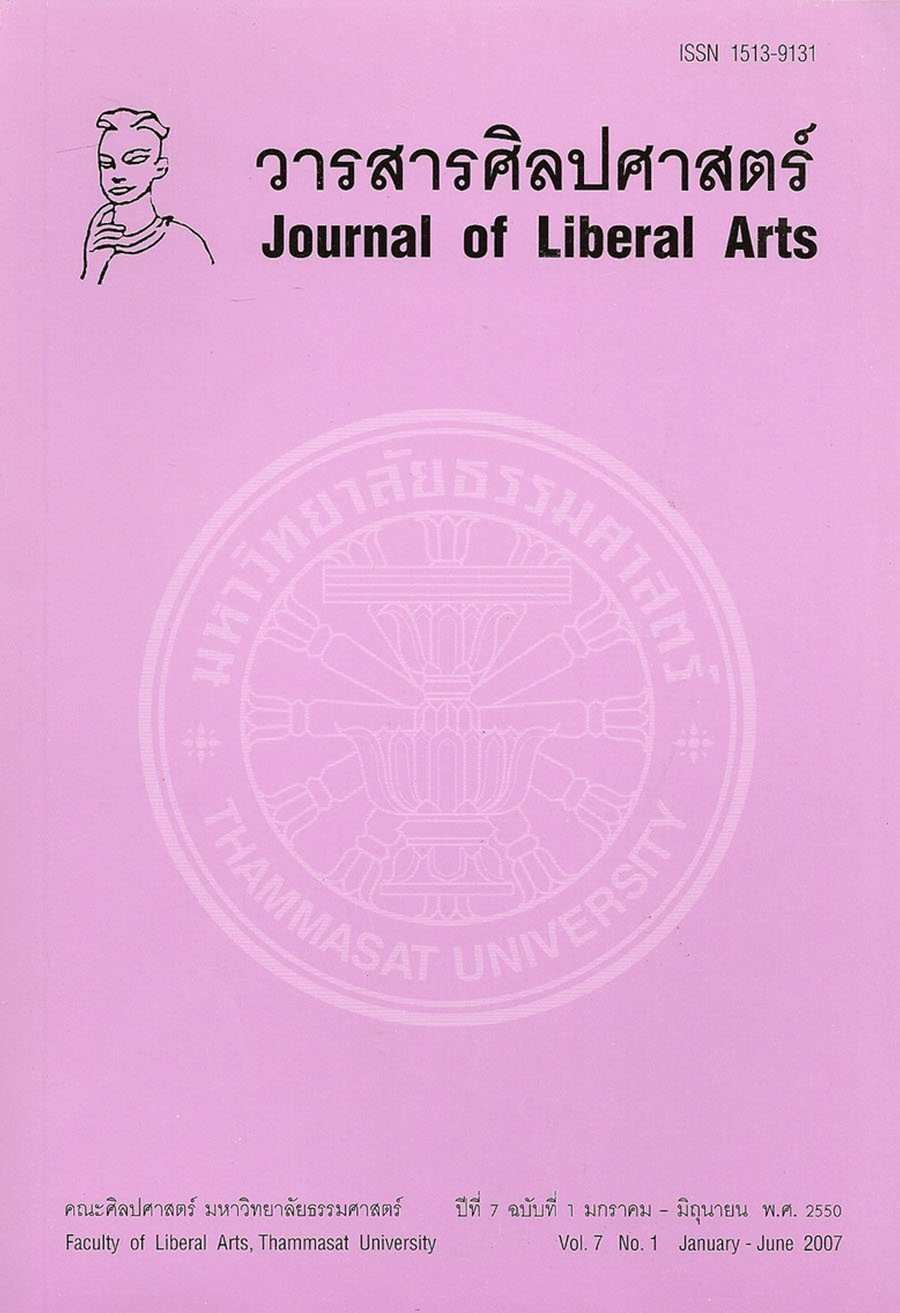ภาษาอังกฤษกับยามักการ
Main Article Content
บทคัดย่อ
บทความนี้กล่าวถึงความเป็นมาของการใช้คำว่า “อังกฤษ” แทนคำว่า English และ England ตลอดจนวิธีการสอนภาษาอังกฤษของหมอสมิท ซึ่งใช้เครื่องหมายยามักการกำกับพยัญชนะตัวสะกดที่ออกเสียงได้ เพื่อแสดงความแตกต่างจากพยัญชนตัวสะกดของไทยที่ไม่ออกเสียง การใช้เครื่องหมายยามักการนี้อาจจะช่วยมิให้ต้องกำหนดให้เครื่องหมายทัณฑฆาตทำหน้าที่ได้ถึง 2 อย่าง คือ ฆ่าเสียงหรือให้ออกเสียงได้เล็กน้อย ในปัจจุบันมีนักแปลบางคนได้เริ่มนำเครื่องหมายนี้กลับมาใช้แล้ว แม้ว่าอาจจะยังมีปัญหาในด้านการป้อนข้อมูลและการพิมพ์บ้างก็ตาม
This article traces the original and usage of the Thai word “อังกฤษ” for “English” and “England.” In addition, a prominent technique for teaching English to the Thai people developed by Samuel J. Smith, an American missionary in the reign of Rama IV, is explained. In this system a Thai marker called “yamakkan” is used to indicate the air stream release of the final consonant in English, as opposed to the Thai final consonant where there is no release of the air stream. This maker “thanthakhat.” At the moment “thanthakhat” carries the dual function of either “to cancel some consonant sounds” or “to release some consonant sounds.” There would be no ambiguity in pronunciation if the “thanthakhat” retained its original function, i.e. to cancel consonant sounds, and left “yamakkan” to indicate the release of consonant sounds. Some recent translators are currently using both markers in spite of some printing technique problems.


